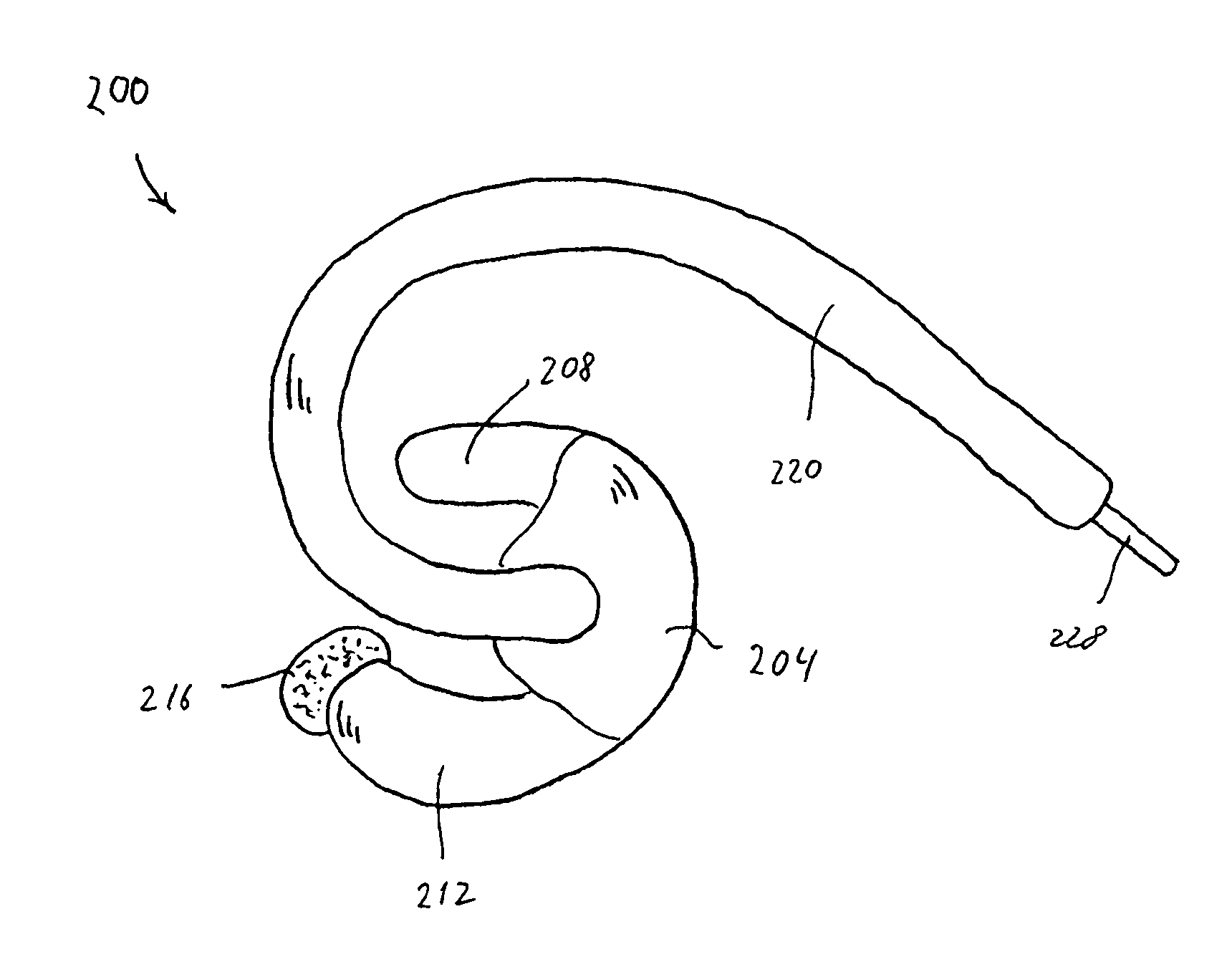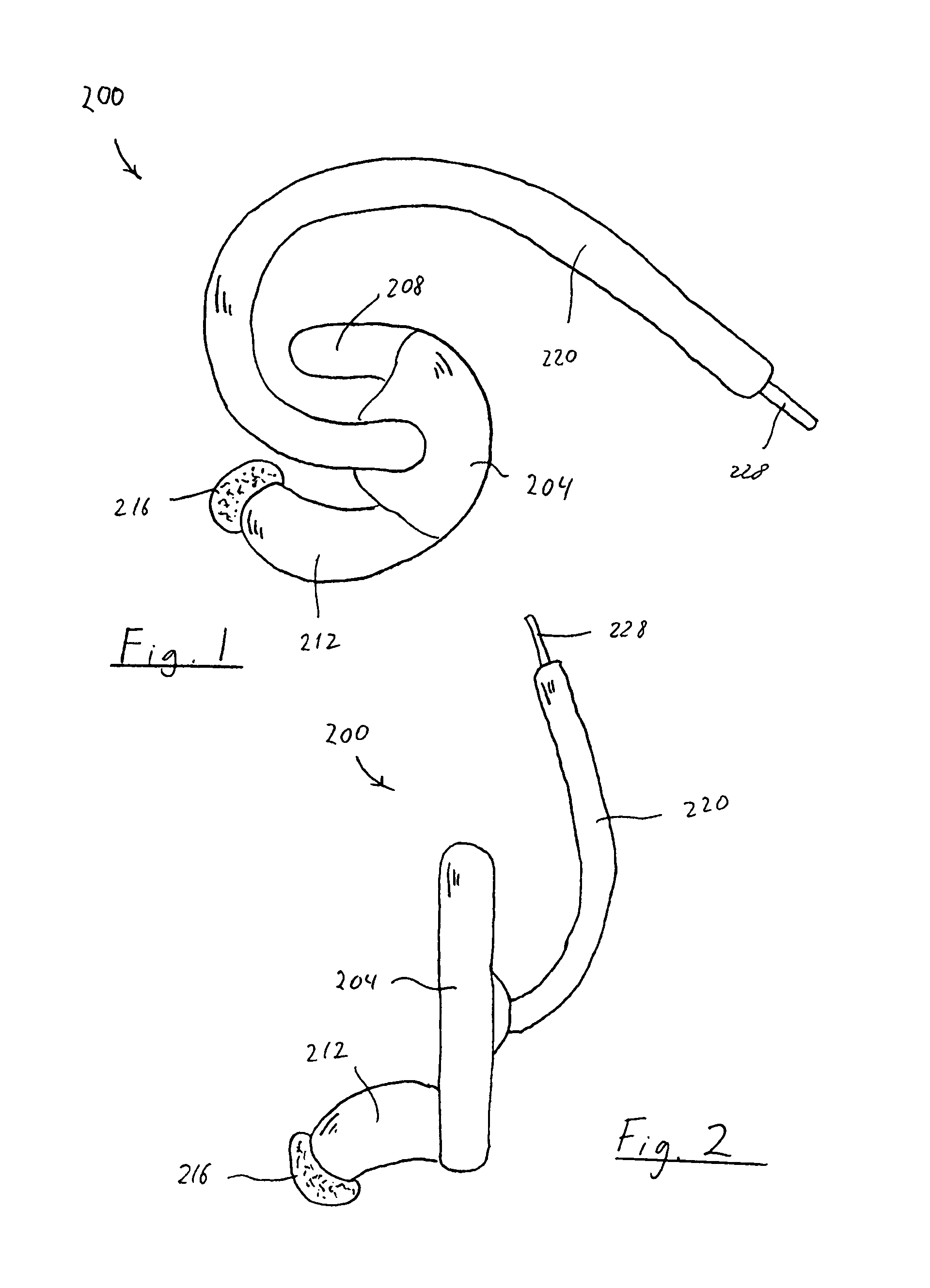Vestibular system stimulation apparatus
a technology of vestibular system and apparatus, which is applied in the direction of artificial respiration, therapy, physical therapy, etc., can solve the problems of involuntary twitching and auditory perception, vertigo, and dizziness of patients, respectively
- Summary
- Abstract
- Description
- Claims
- Application Information
AI Technical Summary
Benefits of technology
Problems solved by technology
Method used
Image
Examples
fifth embodiment
[0054]FIG. 7 illustrates a fifth embodiment for an electrode assembly 300 according to the principles of the present invention that accomplishes this function. In this embodiment, a bladder 302 is provided in body member 304 that stores the electrolytic substance. A channel 306 is provided from the bladder to stimulating electrode 216. The user dispenses the electrolytic substance stored in the bladder into the porous material by squeezing the bladder causing the electrolytic substance to be injected into the porous material. While the bladder is shown provided within the body member, the present invention also contemplates providing the bladder in first protrusion 208, second protrusion 212, or any combination thereof.
[0055]The present invention further contemplates removing the bladder from the electrode assembly but leaving an electrolytic substance filling channel defined from a portion of the electrode assembly to the porous material. A filling port (not shown) would have to be...
sixth embodiment
[0056]FIG. 8 is a cross-sectional view of a vestibular stimulation electrode assembly 320 according to the principles of the present invention. In this embodiment, body member 322, first protrusion 324, and second protrusion 326 are formed from a single piece of porous material 328 that also forms stimulating electrode 330. That is, a hot molding method is used to form a cured hydrophilic foam, which serves as the stimulating electrode, into the shape shown in the FIG. 8. The foam also defines the general overall shape for the entire electrode assembly. A lead wire 332 is fixed to the stimulating electrode. The body member, the first protrusion, and the second protrusion are formed by applying a coating of material to the outer surface of the porous material using any conventional process, such as a spraying or dipping type process. In a preferred embodiment, this outer coating of material is formed from a soft rubber, is an electrical insulator, and is water-proof.
[0057]The area of...
seventh embodiment
[0060]FIGS. 9A and 9B illustrate a seventh embodiment for an electrode assembly 350 according to the principles of the present invention. A prominent feature of this embodiment is the relatively large kidney shape for body member 352. A first arm 354 is provided at one end of the C-shaped body member, and a second arm 356 is provided at an opposite end of the body member. Stimulating electrode 358 is provided at the end of second arm 356.
[0061]The body member is preferably defined by a first limb 360 and a second limb 362 with an opening 364 defined between these two members. First limb 360 is preferably formed from a thin membrane, so that it easily deforms around the cartilage of the ear, namely around the crux, which separates the concha into upper and lower parts. When properly worn in the ear, first arm 354 fits in the cymba conchae, and the second arm 356 fits in the cavum conchae. Second limb 362 provides the strength to maintain the structure in the ear.
[0062]A distal end po...
PUM
 Login to View More
Login to View More Abstract
Description
Claims
Application Information
 Login to View More
Login to View More - R&D
- Intellectual Property
- Life Sciences
- Materials
- Tech Scout
- Unparalleled Data Quality
- Higher Quality Content
- 60% Fewer Hallucinations
Browse by: Latest US Patents, China's latest patents, Technical Efficacy Thesaurus, Application Domain, Technology Topic, Popular Technical Reports.
© 2025 PatSnap. All rights reserved.Legal|Privacy policy|Modern Slavery Act Transparency Statement|Sitemap|About US| Contact US: help@patsnap.com



